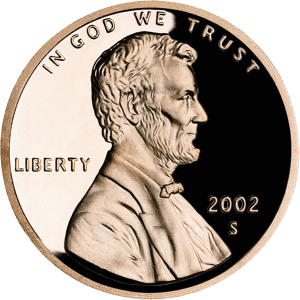If you own any coins that have been certified by major coin grading firms, then you could create an elite type of coin collection called a registry set.
What is a coin registry set and why are more coin collectors building them?
For many coin collectors years ago, it used to be good enough to simply have an uncirculated or mint state specimen of a coin — that is, a coin that has never been in pocket change or used in any transactions.
In the 1980s, things began to change when third-party coin grading became a big deal. That’s when coin collectors began submitting coins to certification companies for authentication and grading.
What Is A Coin Registry Set?
A registry set is a collection of slabbed coins that have been certified by one of the two major coin grading companies: Professional Coin Grading Service (PCGS) and Numismatic Guaranty Corporation (NGC).
These third-party coin grading companies offer registries in which collectors can submit the coins that have been graded by those coin authentication firms. These registries include:
To qualify for submission to the PCGS Registry, coins must be in PCGS coin slabs. However, NGC Registry sets can include PCGS coins as well as ANACS-graded coins.
Why Are Coin Registry Sets So Popular?
Submitting your coins to a registry set is the perfect way to show off your collection.
Some great candidates for coin registry sets include:
- Lincoln wheat cents grading MS 66 or higher
- Jefferson nickels grading MS 67 or higher
- Roosevelt dimes grading MS 67 or higher
- Washington quarters grading MS 66 or higher
- Kennedy half dollars grading MS 66 or higher
- Silver dollars grading MS 65 or higher
- American Silver Eagles in MS 69 or higher
Of course, any graded coins in the higher grading tiers can be submitted to the registry set. But there is some pretty stiff competition out there as each collector shows off his or her highest-grading coins within these registry sets.
In fact, the conception of the PCGS and NGC registry sets has helped to fuel the coin grading market and has helped to drive prices higher for some slabbed coins.
This is one reason you may have noticed a surge in high-priced, common modern coins in so-called “supergrades.”
Supergrade coins are those in the following grades:
- Mint State 69 (MS 69)
- Mint State 70 (MS 70)
- Proof 69 (PF 69)
- Proof 70 (PF 70)
Remember, Mint State 70 and Proof 70 are the highest-possible grades that a coin can achieve, and represent a “perfect,” or flawless coin.
Historically, these so-called perfect (or near perfect, in the case of the 69s) coins are extraordinarily rare, though they have become somewhat more common lately as the U.S. Mint improves coin production techniques and take greater care to strike flawless specimens for coin collectors.
How Are Registry Set Coins Collected?
Often, the collector will try to assemble an entire collection representing a series, type set, or other configuration of coins based around the registry.
Of course, it can get very expensive to build an entire series of coins around high-grade specimens.
Some coins that are worthy of scoring a top-ranking in a coin registry set can costs thousands of dollars each.
Therefore, collectors who want their coins to rank high in the registry may focus on acquiring only one, two, or a few top-grade coins and then submit them into the appropriate registry.
More About Registry Set Coins
- Buying Coins: Slabbed Versus Raw
- A Guide To Collecting MS70 And PR70 Coins
- 7 Benefits Of Participating In A Coin Set Registry Program
I’m the Coin Editor here at TheFunTimesGuide. My love for coins began when I was 11 years old. I primarily collect and study U.S. coins produced during the 20th century. I’m a member of the American Numismatic Association (ANA) and the Numismatic Literary Guild (NLG) and have won multiple awards from the NLG for my work as a coin journalist. I’m also the editor at the Florida United Numismatists Club (FUN Topics magazine), and author of Images of America: The United States Mint in Philadelphia (a book that explores the colorful history of the Philadelphia Mint). I’ve contributed hundreds of articles for various coin publications including COINage, The Numismatist, Numismatic News, Coin Dealer Newsletter, Coin Values, and CoinWeek. I’ve authored nearly 1,000 articles here at The Fun Times Guide to Coins (many of them with over 50K shares), and I welcome your coin questions in the comments below!



